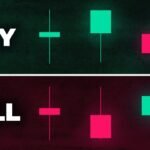TIME STAMPS:
00:00:00 WHAT IS FLAG PATTERN?
00:00:26 FLAG PATTERN TYPES
00:01:42 BULL FLAG PATTERN
00:04:28 BEAR FLAG PATTERN
00:05:27 BULL PENNANT PATTERN
00:06:44 BEARISH PENNANT PATTERN
00:07:44 WEDGE PATTERN
00:08:20 TYPES OF WEDGE PATTERN
00:09:00 RISING WEDGE
00:11:00 FALLING WEDGE
Flag, Pennant, and Wedge Chart Patterns Explained
1. Flag Pattern:
Appearance: Resembles a rectangular flag on a flagpole.
Formation: Starts with a sharp price movement (flagpole), followed by a consolidation phase (flag).
Bullish Flag: Forms after a sharp upward move, with consolidation slightly sloping downward.
Bearish Flag: Forms after a sharp downward move, with consolidation sloping upward.
Breakout: Usually resumes the previous trend direction after consolidation (up for bullish, down for bearish).
Tip: Look for volume contraction during the flag and a volume spike on breakout.
2. Pennant Pattern:
Appearance: Similar to the flag but with converging trendlines, forming a small symmetrical triangle (pennant).
Formation: Like the flag, a pennant begins with a strong move (the pole), but instead of a parallel consolidation, price action converges into a tight range.
Bullish Pennant: Appears in uptrends, with a breakout to the upside.
Bearish Pennant: Appears in downtrends, with a breakout to the downside.
Key Feature: Unlike the flag, the consolidation here is triangular, as buyers and sellers compress price.
Breakout: Typically happens with volume confirmation.
3. Wedge Pattern:
Appearance: The wedge pattern is formed by two converging trendlines, but unlike the pennant, the wedge usually slants either up or down.
Types:
Rising Wedge (bearish): Formed in an uptrend or downtrend with the price narrowing upwards. The breakout is usually downward.
Falling Wedge (bullish): Formed in a downtrend or uptrend, with prices narrowing downward. The breakout is typically upward.
Key Feature: Wedges take more time to develop than flags or pennants and often signal a trend reversal or continuation, depending on the context.
How to Trade These Patterns:
Entry Point: Traders often enter on the breakout from the consolidation (flag/pennant) or after price escapes the wedge pattern.
Stop Loss: Placed below (for bullish patterns) or above (for bearish patterns) the breakout point or near the opposite side of the wedge.
Take Profit: Measured by projecting the height of the flagpole or wedge pattern from the breakout point.
Visual Cues:
Flag: Quick, rectangular consolidation after a strong move.
Pennant: Triangular consolidation following a sharp move.
Wedge: Slanting, tightening range signaling a possible trend reversal.
I have designed this Free Course for you
Here you will learn Stock Market from scratch to advance level
Please subscribe & share these videos
You Can Open A Trading Account From The Below Link:
Zerodha:-
Disclaimer: The information presented on the TRADE THE BEST Channel is provided for educational and informational purposes only. The content on this channel should not be construed as financial advice or as a recommendation to buy, sell, or trade any financial instrument.
Trading and investing in financial markets involve substantial risks. You should carefully consider your own financial situation, risk tolerance, and investment goals before making any trading decisions. It is important to consult with your own financial advisor or professional before engaging in any trading activities.
The views, opinions, and analysis presented on this channel are based on the personal experiences, research, and interpretation of the creators. However, we do not guarantee the accuracy, completeness, or reliability of any information provided. The content may be subject to errors or omissions, and it is your responsibility to verify the accuracy and suitability of any information before relying on it.
TRADE THE BEST Channel does not assume any responsibility or liability for any losses, damages, or financial implications incurred as a result of the information presented on this channel. You are solely responsible for any trading decisions you make and the outcomes thereof.
Please be aware that financial markets are dynamic and constantly changing. Past performance is not indicative of future results.
Any historical data, charts, or examples provided on this channel are for illustrative purposes only and should not be relied upon for making trading decisions.
Lastly, this disclaimer applies to all content, including videos, articles, comments, and any other form of information presented on the TRADE THE BEST Channel.
By accessing and using this channel, you acknowledge and agree to the terms of this disclaimer. If you do not agree with these terms, we advise you to discontinue the use of this channel.
source





